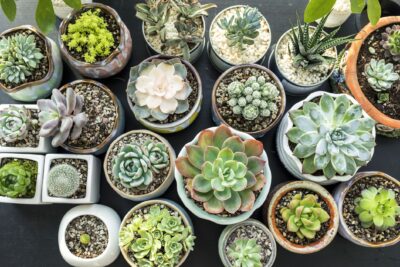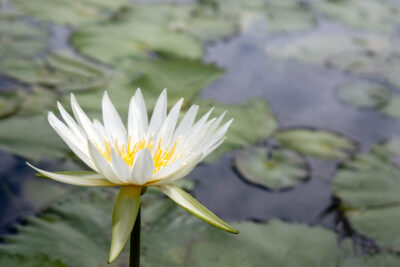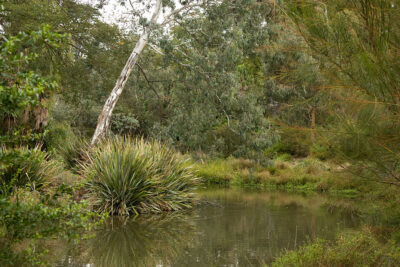
Discover the Fascinating Succulents That Resemble Green Beans

Succulents are a diverse group of plants known for their unique ability to store water in their leaves, stems, and roots. They come in various shapes, sizes, and colors, and can be found in almost every corner of the world. One particularly intriguing type of succulent is the one that closely resembles green beans, with its elongated and cylindrical shape. These succulents have gained popularity among plant enthusiasts and are sought after for their distinctive appearance.
We will delve into the world of succulents that resemble green beans and explore their characteristics, care requirements, and popular varieties. We will discuss their origins and natural habitat, as well as how to cultivate and propagate them successfully. Additionally, we will provide tips on how to incorporate these unique succulents into your indoor and outdoor spaces to create visually appealing displays. Whether you are a seasoned succulent lover or a newbie to the plant world, this article will provide you with valuable insights and inspiration to embrace these fascinating green bean-like succulents.
- Look for the "String of Beans" succulent variety
- Visit a local nursery or garden center specializing in succulents
- Research online for succulent varieties that resemble green beans
- Join a succulent enthusiasts group or forum for recommendations
- Ask friends or family who are into gardening for suggestions
- Attend succulent shows or exhibitions to find unique varieties
- Explore botanical gardens or succulent gardens in your area
- Check out gardening magazines or books on succulents for inspiration
- Create a succulent garden with various types of green bean-like succulents
- Frequently Asked Questions
Look for the "String of Beans" succulent variety
If you're a fan of unique and eye-catching succulents, then the "String of Beans" variety is a must-have for your collection. As its name suggests, this fascinating succulent resembles a cluster of green beans trailing down from its container.
The "String of Beans" succulent, scientifically known as Senecio radicans, is native to South Africa. It belongs to the Asteraceae family and is closely related to the popular "String of Pearls" succulent. However, its long, slender leaves give it a distinct appearance that resembles a string of delicate green beans.
This succulent is a perfect addition to any indoor or outdoor space. Its trailing nature makes it an excellent choice for hanging baskets, where its unique form can be fully appreciated. Additionally, its low maintenance requirements make it an ideal plant for beginners or those with a busy lifestyle.
When it comes to care, the "String of Beans" succulent prefers bright, indirect sunlight. It can tolerate some direct sunlight but be cautious not to expose it to intense, scorching rays. Ensure it receives a few hours of sunlight each day to promote healthy growth.
 Are Pink Succulent Flowers Real? Unveiling the Truth
Are Pink Succulent Flowers Real? Unveiling the TruthAs with most succulents, the "String of Beans" prefers well-draining soil. A mixture of cactus soil and perlite works well to ensure proper drainage and prevent root rot. Water your succulent only when the top inch of soil feels dry, being careful not to overwater as this can lead to root rot.
When it comes to propagation, the "String of Beans" succulent is relatively easy to propagate. You can propagate it through stem cuttings by snipping off a healthy stem and allowing it to callous over for a day or two before planting it in well-draining soil.
Overall, the "String of Beans" succulent is a stunning addition to any succulent lover's collection. Its unique appearance and low maintenance requirements make it a wonderful choice for both beginners and experienced plant enthusiasts. So why not add this fascinating succulent to your space and enjoy the beauty it brings?
Visit a local nursery or garden center specializing in succulents
If you're eager to discover and explore the incredible world of succulents that resemble green beans, a great place to start is by visiting a local nursery or garden center that specializes in these unique plants. These establishments often have a wide variety of succulents available, including those with bean-like characteristics.
When you step into a dedicated succulent nursery, you'll be greeted with rows upon rows of these fascinating plants, each with its own distinct features and charm. The knowledgeable staff can guide you through the different varieties and help you find the perfect green bean-like succulents to add to your collection.
Why choose a specialized nursery?
While you may find succulents resembling green beans at other places, such as general garden centers or big-box stores, opting for a specialized nursery offers several advantages. These nurseries often have a more extensive selection, including rare and hard-to-find varieties that you won't find elsewhere.
 Finding Chinese Jade Succulents: A Guide for Enthusiasts
Finding Chinese Jade Succulents: A Guide for EnthusiastsFurthermore, the staff at specialized nurseries are typically well-versed in succulent care and can provide you with expert advice on how to properly care for and maintain your green bean-like succulents. They can offer insights into the specific needs and requirements of these plants, ensuring their health and longevity.
Exploring the succulent wonderland
Once inside the nursery, take your time to wander through the different sections and marvel at the vast array of succulents. You'll find succulents that resemble green beans in various sizes, shapes, and shades of green. Some may have elongated, bean-like leaves, while others may have rounded or flattened foliage, reminiscent of different types of beans.
As you explore, keep an eye out for unique features such as intricate patterns, textures, or even plants with bean-like pods. Don't hesitate to ask the nursery staff about the specific characteristics of each succulent you come across – they'll be more than happy to share their knowledge and help you identify the most bean-like succulents.
Adding green bean-like succulents to your collection
Once you've found the succulents that catch your eye, it's time to select the ones you want to bring home. Take your time to carefully examine each plant, checking for signs of health and vitality. Look for plump, firm leaves and a well-established root system.
Consider mixing different varieties of green bean-like succulents to create an eye-catching display in your garden or indoor plant collection. You can also experiment with different containers or terrariums to showcase the unique beauty of these plants.
- Tip: Don't forget to ask the nursery staff about the specific care instructions for each succulent you purchase. Different varieties may have slightly different requirements in terms of sunlight, watering, and soil conditions.
By visiting a specialized nursery, you'll not only have the opportunity to discover succulents that resemble green beans but also gain valuable knowledge about caring for these unique plants. So, go ahead and embark on this exciting succulent adventure – you never know what hidden treasures you might find!
Research online for succulent varieties that resemble green beans
If you are a succulent enthusiast looking for unique and eye-catching plants to add to your collection, you may be intrigued by succulents that resemble green beans. These fascinating plants mimic the appearance of the popular vegetable, making them a standout addition to any garden or indoor space.
 Velvet Touch: Discovering the Succulent with Soft Fuzzy Leaves
Velvet Touch: Discovering the Succulent with Soft Fuzzy LeavesThanks to the power of the internet, you can easily research and discover a wide range of succulent varieties that resemble green beans. Online platforms, such as gardening forums and social media groups, are excellent resources for connecting with fellow succulent lovers and learning about these intriguing plants.
Popular succulent varieties that resemble green beans
Here are a few popular succulent varieties that bear a striking resemblance to green beans:
- Lithops: Also known as "Living Stones," Lithops are small succulents that have a rounded shape and a greenish-gray color. Their unique appearance closely resembles that of a green bean.
- Senecio Rowleyanus: Commonly referred to as "String of Pearls," this succulent features small, bead-like leaves that cascade down like the shape of a string of green beans.
- Peperomia Prostrata: With its trailing habit and small, round leaves, Peperomia Prostrata is often recognized as "String of Turtles" due to its resemblance to a string of green beans.
- Ceropegia Woodii: Known as "String of Hearts," this succulent has heart-shaped leaves that grow on long trailing vines, resembling a string of green bean hearts.
Caring for succulents that resemble green beans
While succulents that resemble green beans may look unique, they still require similar care to other succulent varieties. Here are some general care tips to keep in mind:
- Light: Succulents thrive in bright, indirect light. Place your green bean-like succulents near a sunny window, but avoid exposing them to direct sunlight for prolonged periods.
- Watering: Succulents are known for their ability to store water in their leaves, so they prefer infrequent watering. Allow the soil to dry out completely between watering sessions to avoid overwatering, which can lead to root rot.
- Soil: Use well-draining soil specifically formulated for succulents. This type of soil allows excess water to drain quickly, preventing waterlogged roots.
- Temperature and Humidity: Succulents that resemble green beans typically prefer warm temperatures ranging from 65°F to 80°F (18°C to 27°C). They also thrive in low humidity environments.
- Propagation: Many succulent varieties can be propagated through leaf or stem cuttings. Research the specific propagation methods for the succulents you have chosen to ensure successful propagation.
By following these care tips, you can enjoy the beauty and uniqueness of your succulents that resemble green beans for years to come. Whether you choose to display them in a small pot on your windowsill or incorporate them into a larger succulent arrangement, these plants are sure to be a conversation starter among gardening enthusiasts.
So why not add a touch of whimsy and charm to your succulent collection by exploring the world of succulents that resemble green beans? Start your research online and uncover the vast array of options available to you. Happy gardening!
Join a succulent enthusiasts group or forum for recommendations
If you are passionate about succulents and want to explore the fascinating world of succulents that resemble green beans, joining a succulent enthusiasts group or forum is a great way to start. These communities are filled with knowledgeable members who can provide you with valuable recommendations and insights on finding and caring for these unique plants.
 Arizona's Native Succulents: A Biodiversity Oasis
Arizona's Native Succulents: A Biodiversity OasisBy joining a succulent enthusiasts group or forum, you can connect with fellow green thumb enthusiasts who share your love for these quirky succulents. You can ask questions, share your own experiences, and learn from others who have already embarked on the journey of collecting and cultivating succulents that resemble green beans.
These online communities often have dedicated threads or discussions where members can recommend specific varieties of succulents that mimic the appearance of green beans. You can browse through these recommendations and make a list of the ones that catch your eye.
Moreover, in these groups or forums, you may find members who are avid collectors of succulents and might be willing to share cuttings or seeds of rare and unique varieties. This can be an excellent opportunity for you to expand your succulent collection and discover new species that you may not have come across otherwise.
Remember, the knowledge and experience shared by these enthusiasts can be invaluable, especially if you are a beginner in the world of succulents. They can guide you on the proper care, watering, and propagation techniques specific to succulents that resemble green beans.
So, don't hesitate to join a succulent enthusiasts group or forum today and immerse yourself in the wonderful world of succulents that resemble green beans. The journey awaits, and with the support of fellow enthusiasts, you are bound to have a rewarding and educational experience.
Ask friends or family who are into gardening for suggestions
If you are looking to add some unique and visually appealing plants to your garden, succulents that resemble green beans might be just what you need. These plants, with their elongated and bean-like leaves, add an interesting touch to any collection. But where can you find these fascinating succulents? One great way to start is by asking friends or family members who are passionate about gardening for their recommendations.
 Haworthia: Unveiling the Unique Beauty of a Charming Succulent
Haworthia: Unveiling the Unique Beauty of a Charming SucculentChances are, you know someone who is already into gardening and has an extensive collection of plants. They might have come across these green bean look-alike succulents and can provide valuable insights and recommendations. Whether it's a fellow plant enthusiast or a seasoned gardener, they can share their experiences and guide you in finding the most beautiful and healthy succulents.
By reaching out to your gardening network, you can tap into a wealth of knowledge and expertise. These individuals can tell you where they found their succulents, whether it be a local nursery, a specialized succulent store, or even online retailers. They may even be able to recommend specific varieties or species that closely resemble green beans.
Remember to ask for any tips or tricks they have learned along the way to ensure the success of your succulent garden. These insights may include advice on proper care, watering techniques, and the best soil for these unique plants. By learning from experienced gardeners, you can avoid common mistakes and foster healthy growth in your own collection of green bean-like succulents.
So, don't hesitate to reach out to friends and family who share your love for gardening. Their suggestions and recommendations can open up a whole new world of succulents that resemble green beans, allowing you to create a visually stunning and captivating garden.
Attend succulent shows or exhibitions to find unique varieties
If you are a succulent enthusiast looking to discover unique and fascinating varieties, attending succulent shows or exhibitions is a must. These events bring together succulent experts, growers, and enthusiasts from all over, showcasing a wide range of succulent species that you may not find elsewhere.
At these shows, you will have the opportunity to explore a vast array of succulents that resemble green beans. These succulents are known for their elongated, bean-like leaves and come in various shades of green, from vibrant lime to deep emerald.
One of the most popular green bean-like succulents is the Echeveria runyonii 'Topsy Turvy'. This succulent features twisted, spoon-shaped leaves that curl inward, giving it a unique and whimsical appearance. Its pale green color adds a touch of elegance to any succulent collection.
 Discover the Succulent That Looks Just Like an Artichoke!
Discover the Succulent That Looks Just Like an Artichoke!Another fascinating green bean-like succulent to look out for is the Senecio rowleyanus, commonly known as the "String of Pearls." This succulent has long, trailing stems adorned with small, spherical leaves that resemble tiny green beans. Its cascading growth habit makes it a popular choice for hanging baskets or as a trailing plant in a succulent arrangement.
Exploring the world of green bean-like succulents
While Echeveria runyonii 'Topsy Turvy' and Senecio rowleyanus are popular choices, there are numerous other green bean-like succulents waiting to be discovered. Here are a few more varieties to keep an eye out for:
- Sedum morganianum - Also known as the "Burro's Tail," this succulent has long, trailing stems covered in plump, bean-shaped leaves.
- Ceropegia woodii - Commonly called the "String of Hearts," this succulent features heart-shaped leaves that drape down like strings of green beans.
- Senecio radicans - Similar to Senecio rowleyanus, this succulent is known as the "String of Bananas" and has elongated, banana-shaped leaves.
Whether you are a seasoned succulent collector or just starting your collection, exploring the world of green bean-like succulents is sure to add a touch of uniqueness and charm to your indoor or outdoor garden.
Explore botanical gardens or succulent gardens in your area
If you're a plant enthusiast or simply someone who appreciates the beauty of nature, exploring botanical gardens or succulent gardens in your area can be a delightful and educational experience. These gardens are often home to a wide variety of plant species, including the fascinating succulents that resemble green beans.
Succulents, known for their ability to store water in their thick and fleshy leaves, have gained popularity in recent years due to their unique and eye-catching appearance. One particular group of succulents that stands out are those that resemble green beans, with their elongated and bean-like shape.
Visiting botanical or succulent gardens gives you the opportunity to see these green bean-like succulents up close and personal. You can observe their intriguing forms, textures, and colors, and marvel at how they thrive in different environments.
 Succulent Identification Guide: Identify Your Plant with Ease
Succulent Identification Guide: Identify Your Plant with EaseWhy are succulents that resemble green beans so fascinating?
These succulents, often belonging to the Senecio genus, have evolved to have long, cylindrical leaves that closely resemble green beans. Their resemblance to this common vegetable is truly remarkable and adds a touch of whimsy to any garden or indoor plant collection.
One of the most intriguing aspects of these succulents is their adaptability. Just like regular succulents, they are well-suited to arid climates and can survive in low-water conditions. Their ability to store water in their leaves allows them to endure long periods of drought, making them a resilient and low-maintenance plant choice.
Moreover, these green bean-like succulents often produce vibrant yellow flowers, adding a splash of color to their already unique appearance. These blooms attract pollinators like bees and butterflies, further enhancing their ecological value in any garden setting.
How to care for succulents that resemble green beans
Caring for succulents that resemble green beans is relatively easy, making them an ideal choice for both experienced gardeners and beginners alike. Here are a few tips to ensure their well-being:
- Light: Place your succulents in a location that receives bright, indirect sunlight. While they can tolerate some shade, they thrive in well-lit areas.
- Watering: Succulents are drought-tolerant plants, so it's important not to overwater them. Allow the soil to dry out completely between waterings, and be cautious of waterlogged conditions.
- Soil: Provide your green bean-like succulents with well-draining soil, specifically formulated for succulents and cacti. This ensures proper root health and prevents waterlogging.
- Temperature: These succulents prefer warmer temperatures, ideally ranging between 60°F (15°C) and 75°F (24°C). Protect them from frost or extreme temperature fluctuations.
- Propagation: If you want to expand your collection, these succulents can be propagated from stem cuttings or leaf cuttings. Simply let the cuttings dry for a few days and then plant them in well-draining soil.
By following these care guidelines, you can enjoy the beauty and resilience of succulents that resemble green beans in your own garden or indoor space.
Check out gardening magazines or books on succulents for inspiration
If you're looking to add a unique touch to your garden, succulents that resemble green beans are a fascinating choice. To get started, check out gardening magazines or books that focus on succulents. These resources are a treasure trove of inspiration and information, providing you with a wealth of ideas on how to incorporate these bean-like succulents into your garden.
 Succulent Identification: Discovering the Tiny Yellow Flowered Variety
Succulent Identification: Discovering the Tiny Yellow Flowered VarietyWhen flipping through the pages of these magazines or books, keep an eye out for stunning photographs of succulents that resemble green beans. These visuals will give you a clear idea of the various species and their distinctive features. You can also find valuable tips and tricks on how to care for these plants, ensuring they thrive in your garden.
Moreover, gardening magazines often feature articles written by experts in the field, who share their experiences and insights. These articles can provide you with in-depth knowledge about the growing conditions, propagation methods, and even creative ways to display your succulents.
Books, on the other hand, offer a more comprehensive approach to succulent gardening. They may delve into the history, origins, and different varieties of succulents that resemble green beans. With detailed instructions and step-by-step guides, these books can serve as your go-to resource when it comes to cultivating and maintaining these unique plants.
So, make sure to visit your local bookstore or library to discover a wide range of gardening magazines and books dedicated to succulents. Take your time to explore these resources, jotting down any ideas or techniques that catch your eye. With the inspiration and knowledge gained from these publications, you'll be well-equipped to create a stunning garden featuring succulents that resemble green beans.
Create a succulent garden with various types of green bean-like succulents
Succulents are a popular choice for indoor and outdoor gardening due to their unique shapes and low maintenance requirements. One fascinating type of succulent that you may not be familiar with is the green bean-like succulent. These succulents, as the name suggests, resemble the shape and color of green beans, adding a quirky and playful touch to any garden.
Types of green bean-like succulents
There are several varieties of succulents that closely resemble green beans. Here are a few popular ones:
 Understanding Fuzzy Leaves on Succulent Plants: Normal Characteristics
Understanding Fuzzy Leaves on Succulent Plants: Normal Characteristics- Sedum rubrotinctum: Also known as the "Jelly Bean" succulent, this variety features plump, bean-shaped leaves that are green in color. As the plant matures, the leaves may turn red, adding a vibrant pop of color to your garden.
- Senecio rowleyanus: Commonly known as "String of Pearls," this succulent has round, bead-like leaves that resemble small green beans. It cascades down from hanging baskets or containers, creating an eye-catching display.
- Senecio radicans: Similar to the String of Pearls, this succulent is commonly called "String of Bananas" due to its banana-shaped leaves. It has a trailing habit and can be grown in hanging baskets or used as ground cover.
These green bean-like succulents are not only visually appealing but also relatively easy to care for. They require well-draining soil, bright indirect light, and infrequent watering. With proper care, they can thrive both indoors and outdoors, making them a versatile addition to any garden.
Design ideas for a green bean-like succulent garden
Creating a succulent garden centered around green bean-like succulents can be a fun and creative project. Here are some design ideas to get you started:
- Mix and match: Combine different varieties of green bean-like succulents to create a visually interesting display. Play with colors, textures, and heights to create a dynamic arrangement.
- Vertical gardening: Utilize vertical spaces by planting green bean-like succulents in wall-mounted planters or hanging baskets. This not only saves space but also adds a unique vertical element to your garden.
- Container gardening: Plant green bean-like succulents in containers of various shapes and sizes. Mix them with other succulent varieties or add trailing plants for a lush and layered look.
Remember to provide adequate drainage for your green bean-like succulents to prevent root rot. Additionally, consider the sunlight requirements of each variety and place them accordingly in your garden or indoors.
With their playful resemblance to green beans, these succulents are sure to be a conversation starter among gardening enthusiasts. So why not add a touch of whimsy to your garden by incorporating these fascinating green bean-like succulents?
Frequently Asked Questions
1. What are succulents that resemble green beans?
These are a type of succulent plant called Senecio rowleyanus, commonly known as "String of Pearls." They have small, round leaves that resemble green beans or pearls.
2. How do I care for succulents that resemble green beans?
Succulents like String of Pearls need bright, indirect sunlight, well-draining soil, and infrequent watering. They are also sensitive to overwatering, so it's important to let the soil dry out between waterings.
3. Can succulents that resemble green beans be grown indoors?
Yes, String of Pearls can be grown indoors as long as they receive sufficient light. Place them near a window with bright, indirect sunlight or use artificial grow lights.
 Unique Succulent: A Ruby Necklace-Inspired Find
Unique Succulent: A Ruby Necklace-Inspired Find4. How do I propagate succulents that resemble green beans?
Propagation of String of Pearls can be done by taking stem cuttings and placing them in well-draining soil. Make sure to let the cuttings callus over for a few days before planting them.
If you want to read more articles similar to Discover the Fascinating Succulents That Resemble Green Beans, you can visit the Identification category.






You Must Read